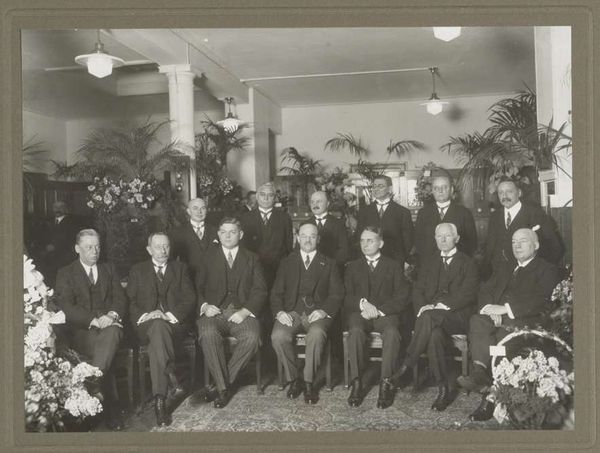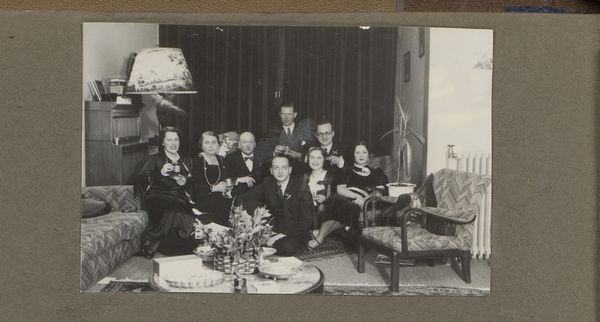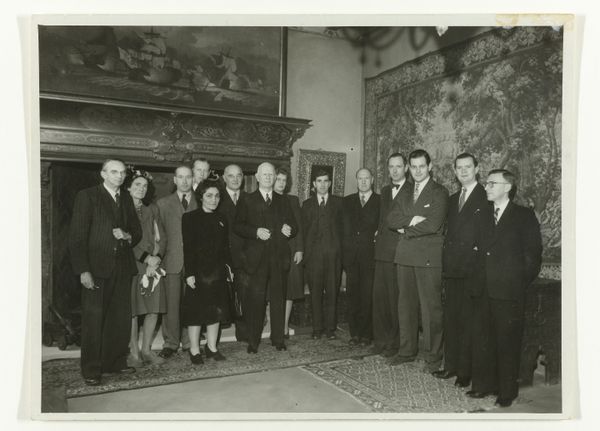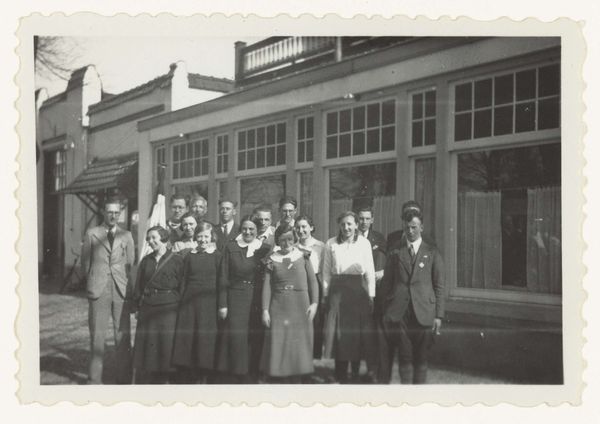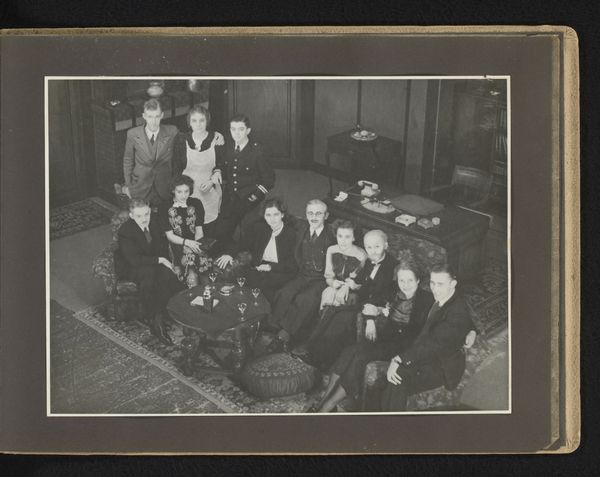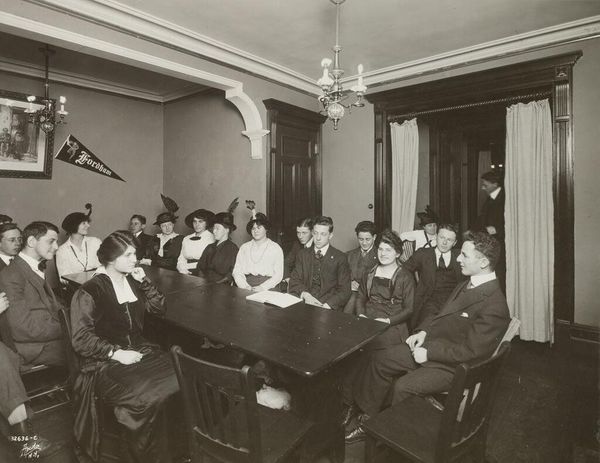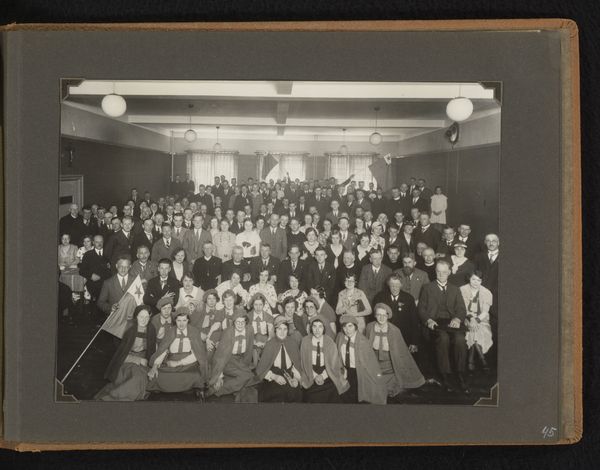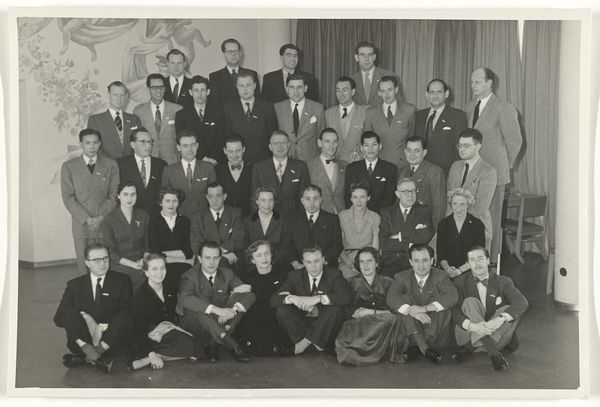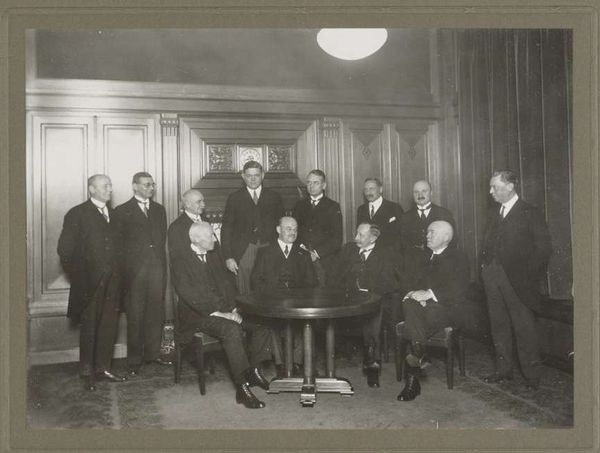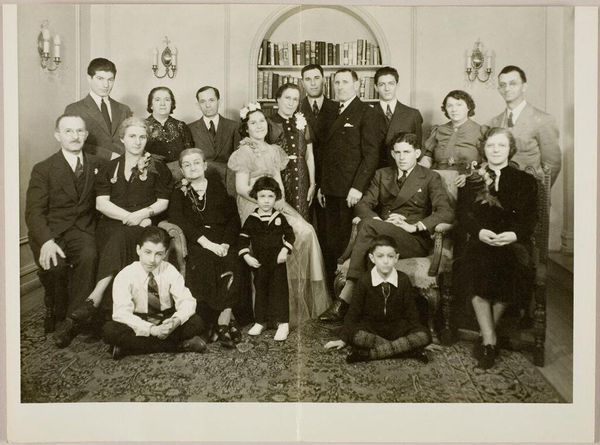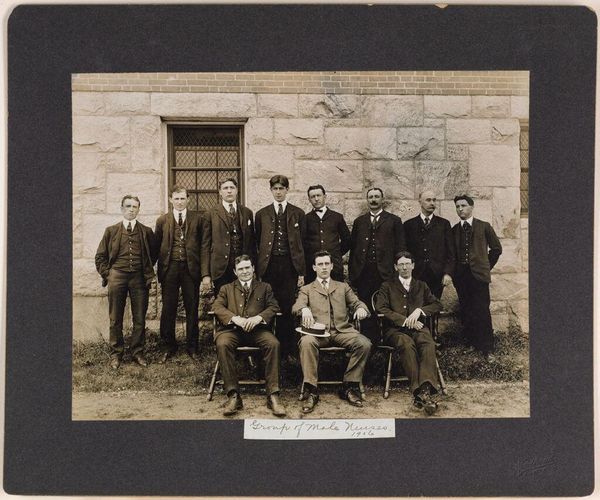
Directie van de Handelsvereniging Amsterdam (HVA) met hun vrouwen en kinderen 1929
0:00
0:00
vereenigdefotobureauxamsterdam
Rijksmuseum
photography, gelatin-silver-print
#
portrait
#
print photography
#
archive photography
#
photography
#
couple photography
#
group-portraits
#
gelatin-silver-print
#
modernism
#
realism
Dimensions: height 165 mm, width 230 mm
Copyright: Rijks Museum: Open Domain
Editor: This photograph, a gelatin silver print from 1929, titled "Directie van de Handelsvereniging Amsterdam (HVA) met hun vrouwen en kinderen" by Vereenigde Foto-bureaux Amsterdam, depicts a formal group portrait. It strikes me as incredibly rigid; the subjects seem consciously posed and separated. What layers do you see in this piece? Curator: It's fascinating how the seemingly straightforward format of a group portrait can reveal complex power dynamics. Look at the arrangement itself – the male directors are predominantly positioned in the back, literally elevated and supported by their seated wives. This photograph embodies the gender roles and social stratification of the Dutch colonial system at the time. Where is race in this picture? It's completely absent, isn't it? Who does this company employ and exploit to create this show of domestic comfort and company strength? Editor: That’s a chilling perspective. I hadn’t considered the absent figures – the Indonesian laborers, for example, whose work enabled this wealth. The flowers held by the women now seem less celebratory and more like symbols of forced compliance within a patriarchal system. Do you think that’s a fair assessment? Curator: I would go even further: flowers in Western art often symbolize fertility and domesticity, thus reinforcing the roles these women are expected to play. These blooms aren’t merely decorative; they’re deeply embedded in the visual language of power. They subtly perpetuate colonial capitalism by not telling a more comprehensive narrative of the organization that financially supports this family. Can photographs lie? Editor: This makes me rethink the entire composition. Thank you for pointing out how critical analysis unveils unspoken narratives of gender, race, and class in this seemingly innocuous portrait. It is eye-opening! Curator: Absolutely. Remember, art, even a seemingly straightforward photograph, is never neutral. It's a product of its time, reflecting and reinforcing the dominant ideologies.
Comments
No comments
Be the first to comment and join the conversation on the ultimate creative platform.
